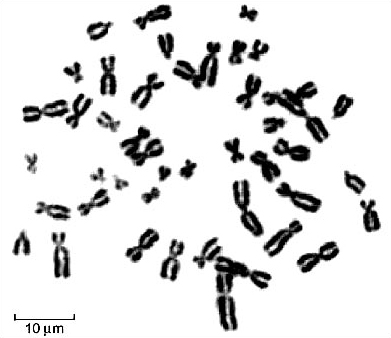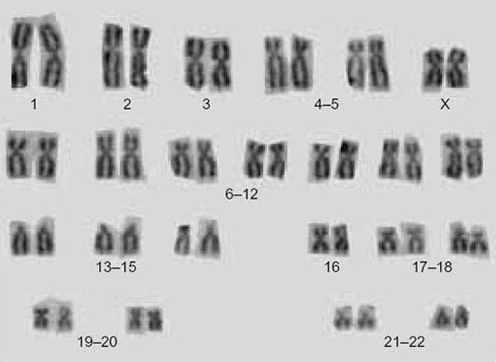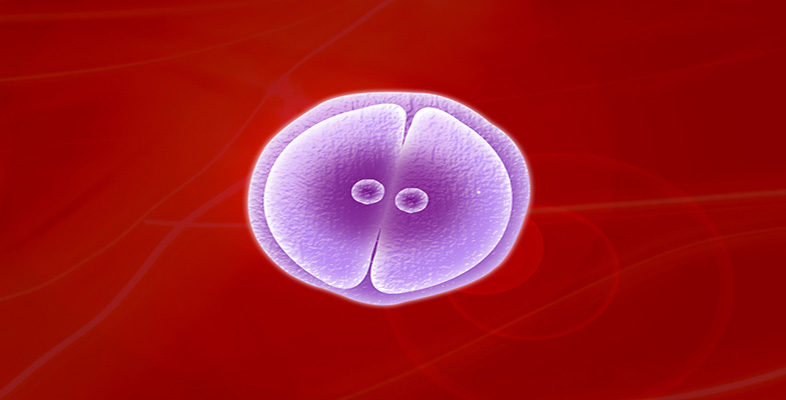1.1 Chromosomes and the life cycle
Chromosomes are present in the cells of all eukaryotes. Their number varies enormously and is characteristic for each species. The parasitic worm Ascaris lumbricoides has only four chromosomes whereas some ferns, such as the adder's tongue fern (Ophioglossum vulgatum), have more than 1 000 chromosomes. Most eukaryotes have between 10 and 50 chromosomes; for example humans have 46. However, there is no obvious relationship between chromosome number and an organism's complexity of organisation.
When the chromosomes are aligned along the centre of the cell during metaphase of mitosis (Figure 1), they are in their most condensed state so their number, size and shape can be most easily studied. Figure 1 shows the metaphase chromosomes of a human female. These have been stained and spread out so that they are readily distinguishable. The array of chromosomes that a particular species possesses is called the karyotype. For any one species, the male and female karyotypes may differ slightly because of the sex chromosomes. By cutting out the chromosomes from photographs taken down the microscope and lining them up according to their size and shape, the distinctive features of the karyotype can be revealed (Figure 2).


Question 1
What is the most striking feature of the karyotype shown in Figure 2?
Answer
All the chromosomes are present in pairs; each member of a pair has the same structure and appearance.
Each member of a pair of chromosomes is said to be homologous to its partner, that is, to have the same size, shape and function. Another feature of the karyotype in Figure 2 is the different appearances of the chromosomes; non-homologous chromosomes can be distinguished from each other by their length and the position of the centromere, and although many look very similar, to the trained eye and using more sophisticated staining techniques, each pair is different.
Question 2
How can you tell that the karyotype in Figure 2 is of a diploid cell?
Answer
The chromosomes are present in pairs — homologous pairs — hence they must be from a diploid cell.
